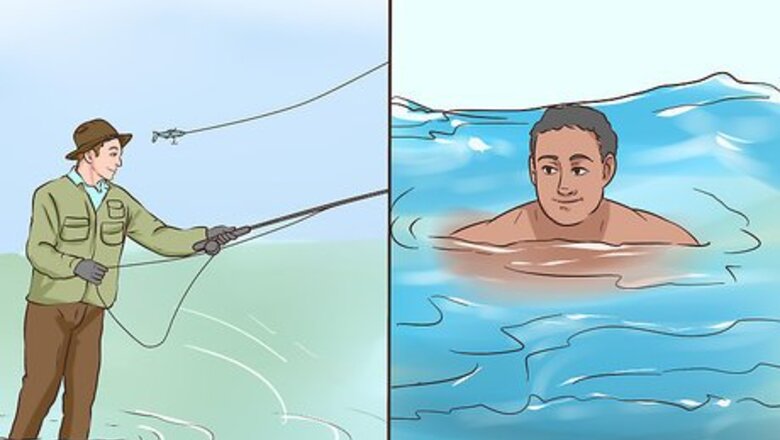
views
Identifying Your Needs
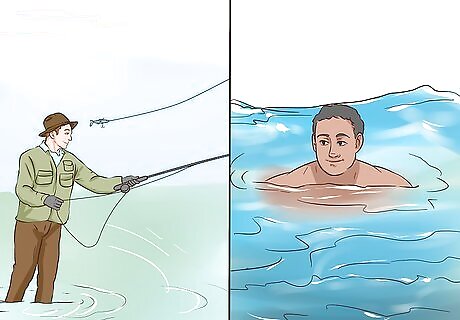
Decide what activities you want to do. The things you pack on your camping trip depend on the activities you want to engage in. For instance, if you plan on going fishing, you’ll need to bring fishing rods, a tackle box, and so on. If you plan on swimming, you’ll need to bring a bathing suit.
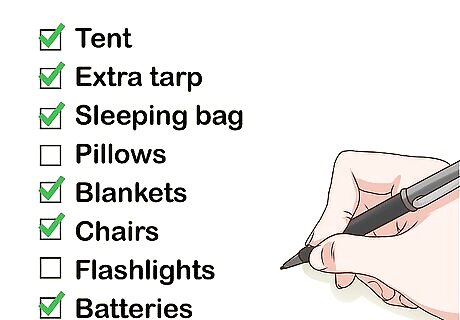
Make a checklist of things that you’ll need for those activities. Once you’ve determined the activities you want to do on your camping trip, write everything down on a checklist. Collect the necessary items and cross them off as you go.
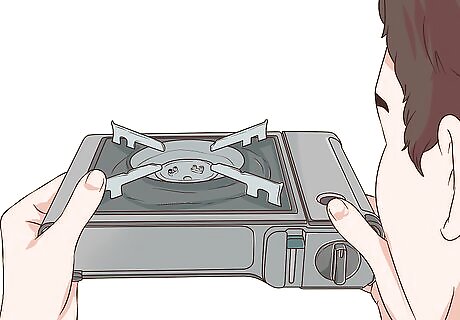
Evaluate your gear for damage and functionality. If you have a portable gas-fired stove, test it before packing it. If it hasn’t been used in a while, you might need a refresher on how to use it. If it needs a replacement gas canister, you’ll want to know before you head out to your campsite. Turn your flashlights on and replace batteries if they are dead. Test your lighters and get new ones if they are out of fluid. Check for tears in your blankets, sleeping bags, and tent, as well. Replace them as needed. Test the batteries on your GPS and your personal alarm, if you use them.
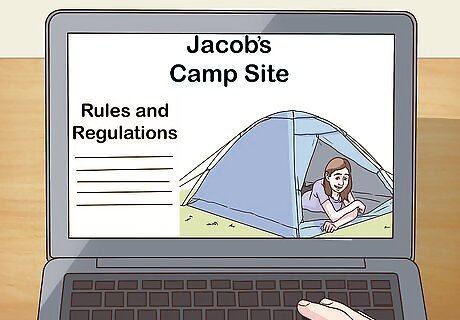
Check the campsite regulations to find out what you cannot bring. Different campsites allow different types of camping activities. For instance, some campsites allow campers and automobiles, while others only allow tents. Additionally, some campsites allow fires, while some do not. Contact the campsite authority or check their website to determine how you’re allowed to use your campsite.
Packing Basic Supplies
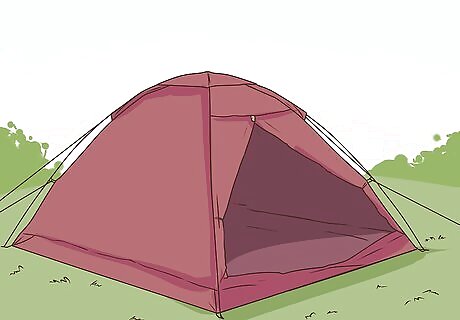
Bring a tent. A tent is the most common source of shelter used when camping. If you haven’t set up your tent before, set it up in your yard once or twice before you arrive at your campsite to get some practice. Tents come in many different sizes. If you’re camping alone, you could get a small, single-person tent. If you’re camping with someone else, get a tent that accommodates both of you.
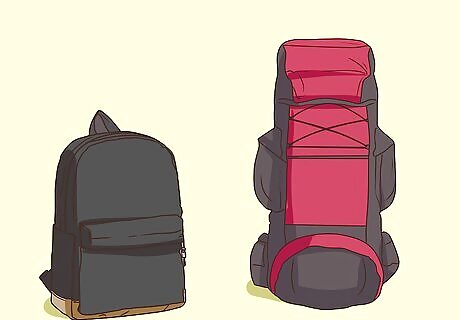
Bring a backpack if you plan on hiking. If you plan on going hiking or climbing during your camping trip, you’ll want a backpack. The size of the pack you decide to bring depends on how far you’ll be hiking. Longer, more intense hikes will require a larger and sturdier backpack, while easier day hikes will only require a small day pack. Backpacks are either frameless, or have an internal or external frame. Internal frame packs tend to be more expensive and sit flush against your back. External frame packs are more affordable and tend to provide more ventilation. However, they are bulkier than internal frame packs. Smaller day packs that don’t hold much are usually frameless.
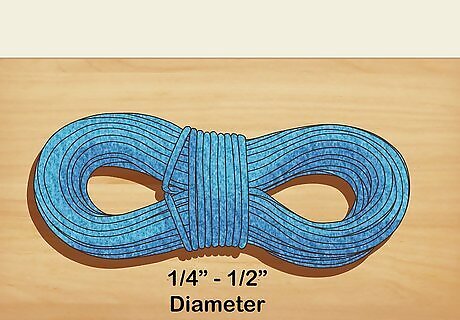
Bring some rope with 1/4’’ to 1/2’’ (6.3 to 12.7 mm) diameter. A sturdy rope has lots of uses when camping. You can use it as a clothesline, or cut it into various lengths in order to hang pots or bind your sleeping pad to your backpack. You'll want to store and coil your rope correctly when you pack it to avoid tangling.

Pack a tarp to protect the top or bottom of your tent. A tarp can provide additional protection for the bottom of your tent, or it can be stretched over your tent to keep it extra-dry. The size of the tarp you get depends on the size of your tent. The larger your tent, the larger the tarp you bring along.
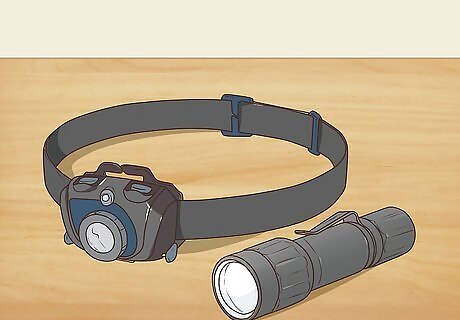
Bring a flashlight or headlamp. A battery-powered flashlight or headlamp is important for helping you find your way around your campsite after dark. Headlamps can be useful to complete tasks around your campsite, as your hands will be free. Be sure to pack extra batteries. You might also want to bring a battery-powered lantern.
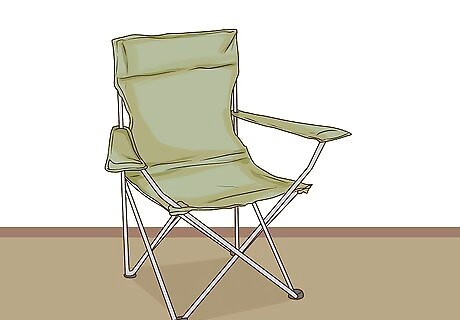
Pack foldable chairs. Collapsible camping chairs are perfect for sitting around the fire or just lounging around the campsite. The best camping chairs are lightweight and sold in specialty backpacking stores. If you’re camping with a group, advise each person in your party to bring a foldable camping chair of their own.
Dining in the Campsite
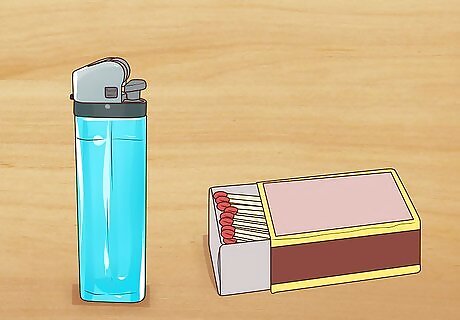
Bring something to light a fire. Matches are the camping standard, but you could also bring a lighter. If you’re looking for a real sense of “roughing it” in the great outdoors, you could bring a flint and steel set. You could also pack less conventional fire starters like fire paste, fire disks, and fire cubes.
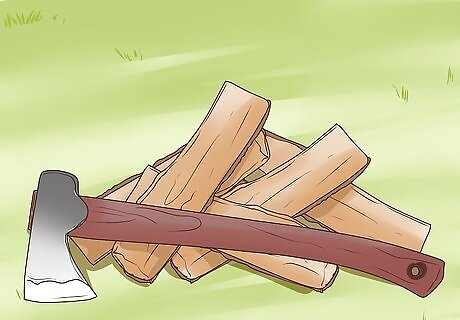
Bring an axe and firewood, if necessary. If you cannot buy or harvest firewood from the campsite you’re staying at, you’ll need to bring your own. In either case, you’ll need to bring an axe along to split it into a more manageable size. You can often buy firewood at big box stores or from private sellers in rural communities. Check if you're allowed to have a fire. At many campsites you won't be allowed to have a fire, especially during fire season. Bring a stove if you can't have a fire.
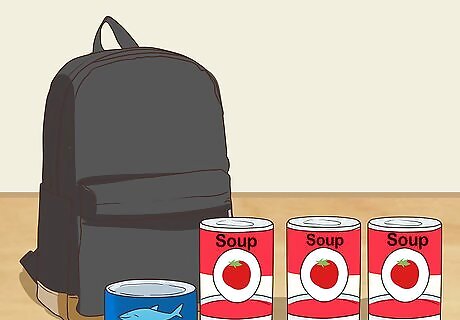
Pack your food. There is no one “right” amount of food and water that you should pack for a camping trip. If you require a lot of calories and/or plan to be very active during your camping trip, you should pack more food to stay energized. If you don’t intend to eat much, you can pack less food. The type of food you bring also varies significantly depending on your circumstances. If you’re camping with an RV, for instance, you’ll be able to bring foods like eggs and meat that require refrigeration until they’re cooked. If you don't have an RV, however, you’ll probably need to rely primarily on canned goods like beans, soups, and canned veggies, so remember to bring a can opener.
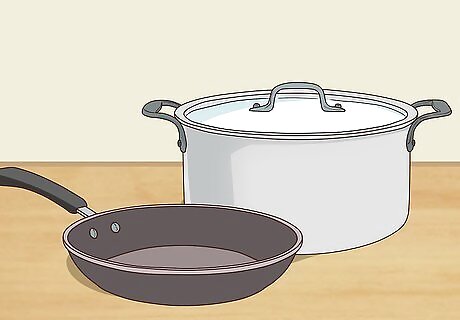
Pack some pots and pans. Even if you have a roaring fire, you won’t be able to cook anything without a set of pots and pans. You could bring your regular pots and pans, but you’d be better off bringing a smaller, lighter set of pots and pans that were designed specifically for camping.

Bring utensils and paper plates. Once you’re done cooking, you’ll need something to eat off of. Paper plates are ideal because after using them, you can just toss them in the fire. Bring some utensils, too, including at least one sharp knife and one butter knife. You could bring either plastic utensils or washable ones.

Bring water with you unless there is a source of water at the campsite. Consult a guidebook for the campsite or check their website to determine whether you’ll be able to access water on the campgrounds. Unless the campsite has a spring or river nearby where you can collect water, you’ll need to bring bottled water. You’ll need to drink at least 8 to 10 glasses of water per day, but the precise amount of water you’ll need to stay hydrated depends on local weather conditions and your activity level. Drink more water as the temperature and your activity level increase. If you collect water from a local waterway, boil it before drinking to kill pathogens.
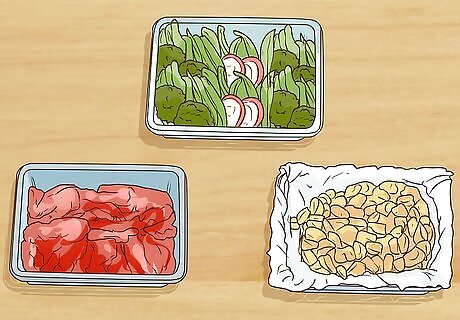
Prepare what you can at home. Before going camping, marinate meats, slice veggies, and wrap your potatoes in foil. This will set you up for success once you reach your campsite.

Bring a portable spice rack. You don’t have to suffer through bland, boring meals just because you’re camping. A portable spice rack with basics like salt, pepper, rosemary, cinnamon, powdered garlic, and a handful of other spices is a useful addition to any camping packing list.
Packing Safety and Navigational Items
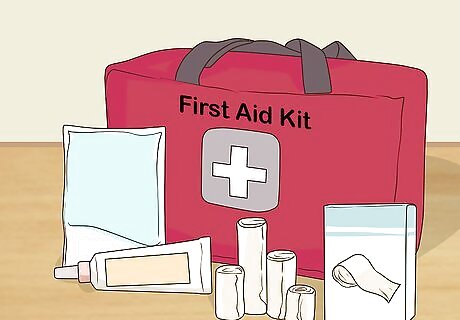
Pack a first-aid kit. Your first-aid kit should include materials to deal with burns, cuts, and bumps. An anti-bacterial ointment, bandages of varying sizes, instant cold packs, and gauze should all be part of your first-aid kit. A few common medicines like aspirin or another pain reliever might also come in handy. You might want to bring a larger, more substantial first-aid kit that you leave in your tent at the campsite, as well as a portable one that you can stuff in your backpack before hitting the trail.
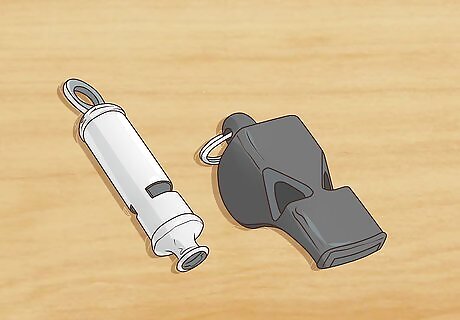
Bring whistles. Whistles are useful for signaling where you are when hiking with a group. They can also be used if you get lost or encounter danger. Blowing loudly on the whistle will let others in the area know you are lost and need help. In addition to (or instead of) the whistle, you could bring along a personal alarm. Personal alarms for hiking and camping are portable devices that emit a loud sound when activated. They can be used in the same way as your whistle.
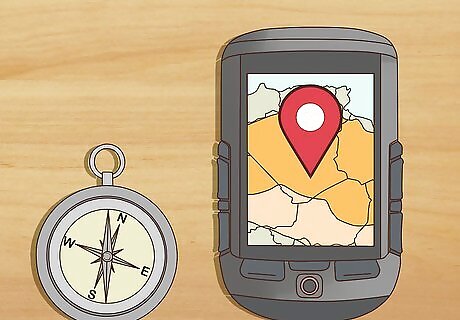
Bring a compass or portable GPS. A compass or portable GPS are crucial for finding your way if you plan on venturing out on day hikes. They can even be useful if you’re heading out on shorter hikes around the campground.

Bring a map. If you’re camping and intend to climb some mountains or go on some hikes, get a map of the area. You can usually get a map of the campsite and trails that link to it from the campsite authority.
Organizing Everything
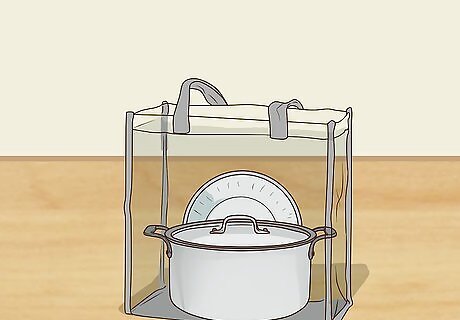
Place all your kitchen supplies in a large, clear tote. A clear plastic tote is a great way to keep all your kitchen supplies together while also ensuring that you can quickly identify the location of a given item. Place a tarp on the bottom of the tote, then place your portable stove and pots and pans on top of it. Place lighter, smaller items like utensils and dishtowels on top of the heavier stove and pots.
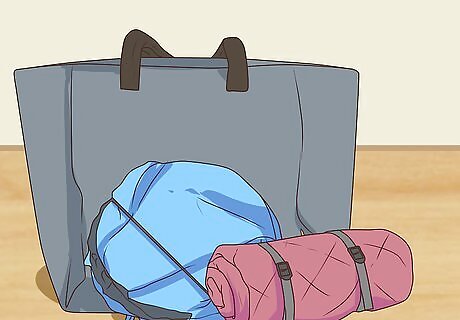
Store tents and sleeping bags in another large tote. If you have additional blankets or sleeping pads, they should go in this tote, too. You should also bring a small camping pillow.
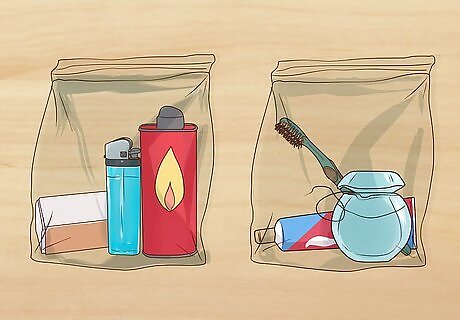
Place similar items together in resealable plastic bags. For instance, if you have a lighter, matches, and lighter fluid, place them all together in a single plastic bag. Toiletries like toothpaste, your toothbrush, and floss should also be bagged together.
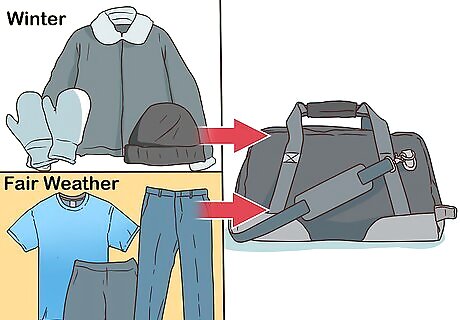
Pack weather-appropriate clothing in a suitcase or small bag. If you’re camping in the winter, bring mittens, coats, and winter hats. If you’re camping in fair weather, bring t-shirts and shorts, but bring a few sweaters and pants for chilly nights. Remember to bring a rain slicker just in case. If you plan on hiking, bring some hiking boots, too. The amount of clothing you’ll need on your camping trip will depend on the length of your camping trip. Don't over-pack. Bring only what you’ll need. Bring a separate bag for dirty clothes.


















Comments
0 comment